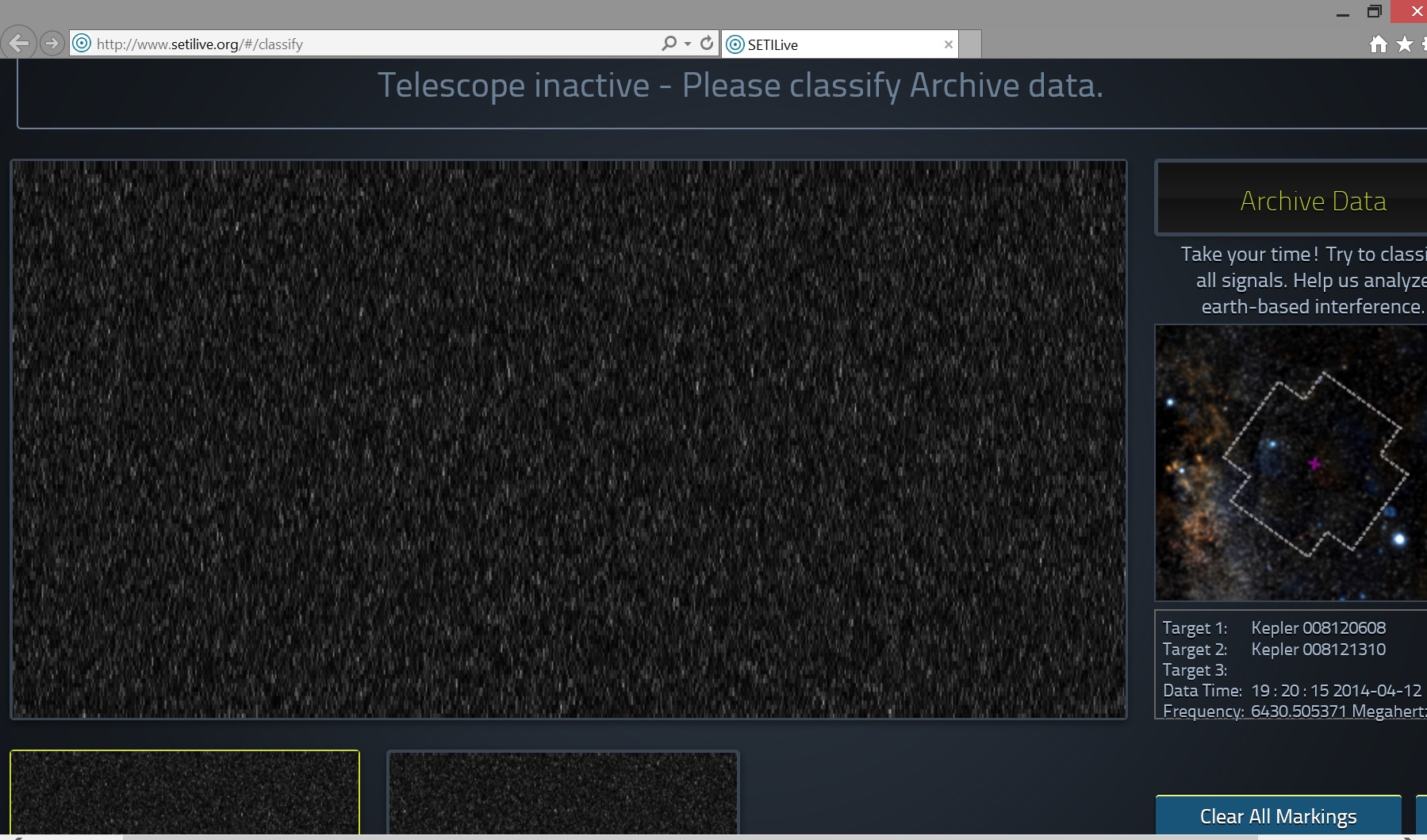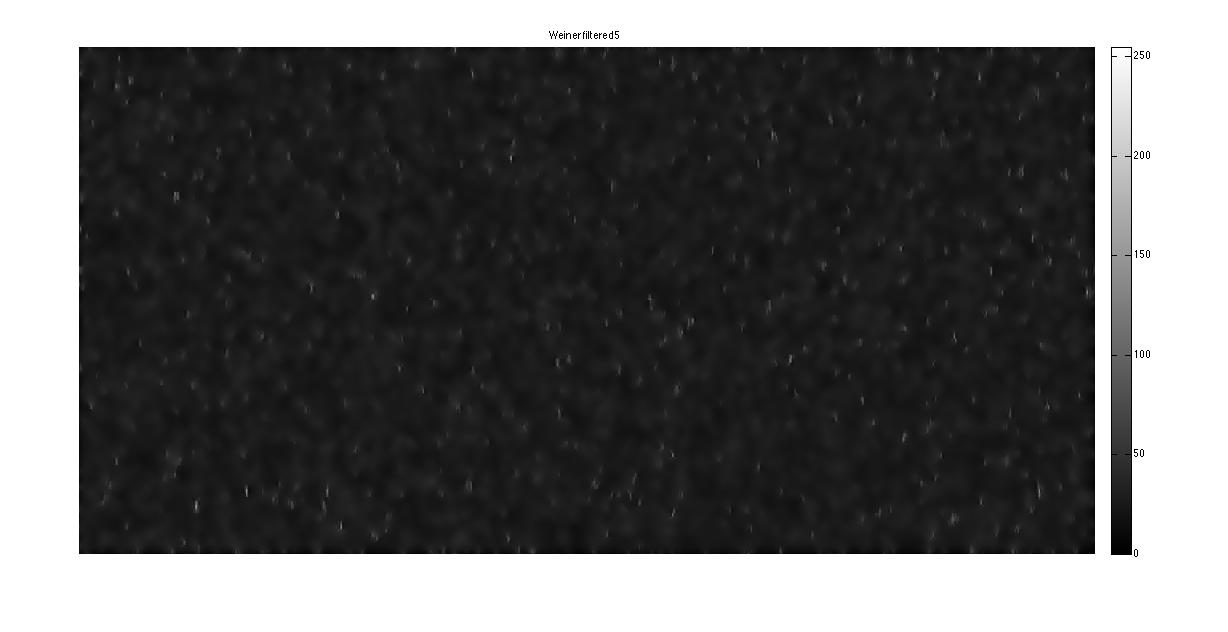Consider this post in which Gerry Harp states how and what type of signal the SETI team looks for.
In his posting he states without explanation that this blog has very little science content. Which, without explanation is simply an ad hominem fallacy. Then he appeals to their authority i.e. not simply using names but referring to people by their titles i.e. Dr. so and so, describing the bureaucracy he has to deal with. He's very subtle about it but he does use those fallacies. Their process while careful is not fundamental to calling something science or scientific. I have bureaucracy to deal with, I have a title I could use and letters for after my name too. So what?
(A blog post SETI reproduced on it's website. Ad hominems are the thanks I get for working for SETI Live in my spare time. SMH)
This is a reply which I posted to gharp 's blog, stated in enhanced form with figures.
With all due respect:
Open my article and scroll down to the waterfall image, taken by the ATA, revealed on April 12th to those of us who are part of the SETI Live project. (This is the screen shot of the waterfall with all it's context, note the date stamp and the Kepler 8120608 identifier.

This corresponds to Kepler 186 as the open exoplanet catalog confirms.
Those of us who look at these waterfalls for SETI live often see data, in real time, as it is coming off the ATA. The site actually tells us when the dishes are rotating to a new target and makes us wait for the data to process into a waterfall. Did you know that people like me actually see your data at the same time as, if not before, you do? It's understandable if this is news to you as your position is very high up the ladder and may not make contact with facts on the ground so much.
We get to look at it, but we don't get to really keep it. It would be nice to be able to obtain a .fits file of the data for our own personal analyses. A screen shot .png or .jpg is all SETI live volunteers like me get to keep. Meanwhile, if I wanted to download a .fits of say the CMB data from Planck, or the Glimpse catalog from Spitzer, I could. So why not a publicly accessible catalog of all the data taken by the ATA? Others may find things you didn't think of. If not evidence of life perhaps other interesting phenomena. There are numerous benefits to having open access to data. The more eyes that look the better chance someone will see.
Why not share your data like everyone else? Why do "secret experiments"?
With the type of data available to me I could use noise filtering techniques used for image processing which were most appropriate. The waterfall from SETI Live was removed from it's frame and subjected to five Weiner filters. I even posted the code for carrying out this noise filtering so others could scrutinize it. You see after five Weiner noise filtering's this is the result.
 Certain line segments stand out on the filtered waterfall. They form sets of parallel dashed lines. Though not in perfect unison like some natural phenomena would be. IF of intelligent origin they would be some sort of radar made to scan space ( like our air forces PAVE PAWS / BMEWS early warning radar) or perhaps a system designed for deep space communication within their own solar system. That is IF they existed 500 years ago and are intelligent.
Certain line segments stand out on the filtered waterfall. They form sets of parallel dashed lines. Though not in perfect unison like some natural phenomena would be. IF of intelligent origin they would be some sort of radar made to scan space ( like our air forces PAVE PAWS / BMEWS early warning radar) or perhaps a system designed for deep space communication within their own solar system. That is IF they existed 500 years ago and are intelligent. Bear in mind a red dwarf lives longer than a sun like star so any life there will have had much longer to evolve. That raises the probabilities considerably. Even on a planet that is likely very cold, and very weird. Especially if we allow for the real chance it is tidally locked to it's star. A planet with either day or night, never both. Sci-fi has yet to imagine a place so strange and potentially so familiar in other ways.
There is a scientific logic to my claim. A hypothesis which can be tested as I explained in my article. It's like making a stool. Finding a Earth-mass habitable zone planet is one leg, a marginal radio signal is just another leg, even a "tuning fork like signal" alone would prove nothing certain to me without the third leg. We need to somehow, someway, get more detailed observations of Kepler 186-f. We need to find a way to examine Kepler 186-f's spectrum and look for the chemical markers of life, and possible technology. Only then will we have a stool that can stand, and only then could we claim to have certainly found life let alone technology.

Even if we have to invent a telescope of a scale and type never dreamed of before. I am ready and willing to let my signals be shown to be as illusory as Percival Lowell's Martian canals.
Proposing a hypothesis, and a way to test it is the method we call science. Even or especially if that test would be a technical challenge.
Falling back on institutional clout, personal titles (i.e. Dr. So and So or even Professor Some such person MS), having the money to afford the publication fees journals ask for, having the institutional backing to just work on one thing for months to get it through peer review, is not science.
Science is not the process of publishing in a journal. Science is the process of inquiry guided by a method that can't be bought and paid for. Journals are a curated communications channel with boundaries both scientific and monetary. Tell us how much it cost to publish in Science, Nature, Physical Review, etc. The blog where I have covered the news for 7 years cost me nothing and even pays me a very little money. Don't make the common mistake of thinking that money and those trappings of a career in science, and institutions of science == the only legitimate sources of science.
End of my reply to Gerry Harp.
All I have said is to find extraterrestrial life and intelligence we need multiple lines of evidence and then that MATLAB does not lie. There is something there to see and we need to keep looking.
We need more than a planet found by transit to be in the habitable zone.
We need more than an at least marginal (even tuning fork like SETI prefers, let alone broad band like) signal.
We need more than just a spectrum from a planet which could indicate life and possible technology.
Any one of those things would have alternative explanations. Any two of them is cause for great concern. A signal alone, or a Earth mass exoplanet alone don't mean ET is calling. If there are both, if there is even a chance and we don't follow up on it seriously it would be a great blunder. We need to find all three about 186-f more than we need to go to Mars, and I'm a big fan of human space flight saying that.
If we don't look very seriously and much more than we have..... It could be like looking for decades for a needle in a haystack, then dismissing the needle because it's not the expected kind of needle.
All three signs, a planet, a faint signal, and a life indicating spectrum means a true discovery. We may have two and should start to look for the third as if our very lives depend on it. I hypothesized about what we could find and what we should look for. Proposing a testable hypothesis based on data is science in the most raw form. Right now, flip a coin and I can argue for either side of that coin. If some people wish to misinterpret that one way or the other that is their lack, not mine.
The scientific method incorporates steps of making observations, taking data, hypothesizing, then testing that hypothesis, then communicating to other scientist. Journals which cost money to publish in, and institutional backing are not fundamental to any of that. While they are good indicators of credibility, they are not indicators of infallibility.
UPDATE: A note on future observational possibilities and test:
There are two ways we might get observations capable of analyzing the spectrum of Kepler 186-f and the other stars in the Kepler field which have confirmed exo-planets. The first and simplest way is by using a TPF-I like interferometer-telescope and long exposures. This same technique was used for the Hubble ultra-deep-field images. A use not originally envisioned for the Hubble. The only limits to this technique lie in computing power, and programming to adjust for all the relative motions. It would not produce a true, "image" but if we can collect enough photons we can produce a very good reconstruction.
The second technique is to use the sun as a gravitational lens. This technique was conceived by Einstein and latter proposed by Frank Drake in the early days of SETI. The sun's gravity bends all light and forms an immense lens. At 550 AU (550 times the average Earth Sun distance, 1 astronomical unit) or more the sun will focus light to a point just like a lens. This requires that we send a probe to that distance on the opposite side of the Sun from the star or stars we wish to observe. This method has the disadvantage that it will take a very long time for any space telescope(s) to reach that distance, and once sent if there is a problem repair will be impossible. Even if all goes to plan, once the telescope is in position steering it will take a very long time. (That is why the Kepler field with it's multitude of confirmed Exoplanets would be a good target.) For the details see: "Interstellar radio links enhanced by exploiting the Sun as a Gravitational Lens" by C. Maccone (Acta Astronautica 01/2011; DOI:10.1016/j.actaastro.2010.06.039)
Never say impossible.
Update 2:
My three criteria can be looked at in the form of an equation. Let E be the chance a given planet has extraterrestrial intelligence, P represents our level of confidence in the existence of a habitable planet, Si will be the level of confidence in a signal from that planet, and Sp our level of confidence that spectroscopy indicates life and technology. E, P, Si and Sp will be between zero and one.
I took P=1 since it is a confirmed result, for all the same reasons that SETI brass give in their writings justify that level of confidence in 186f (although "confirmed" exoplanets have been revised out of existence before). Sp =0 since we have no spectral data and won't for a great while. The question is one of Si. SETI brass look for their tuning fork like signals, I look for broadband. Even so I am only 51% to 60% confident in my determination. Considering that the noise filtering I did with Matlab did not just average away what I marked...my skepticism has to give way to mathematics. That said, E =(1/3)(1+1/2+0)=(1/3)(3/2)=(3/6)=1/2 Hence about a 50% chance.





Comments